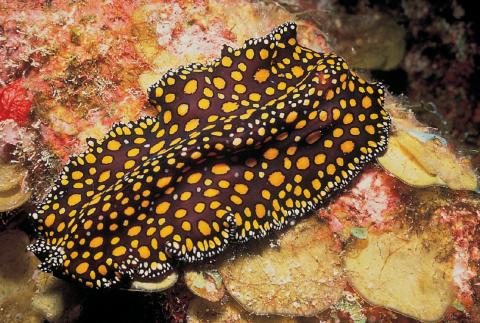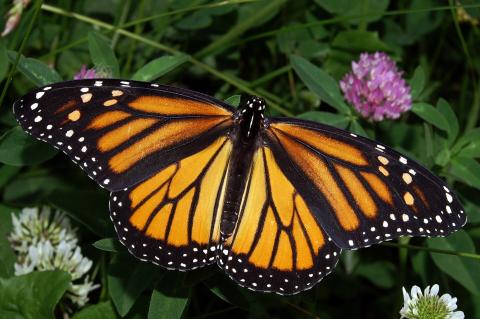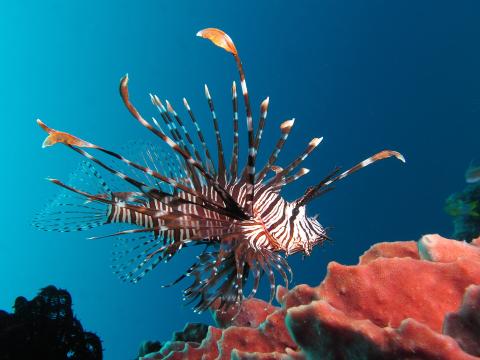
When we see brightly colored or contrasting-colored animals we are alarmed. Many of these animals are sending a warning signal to predators that they’re not worth pursuing because they taste terrible, have hidden defenses or are toxic. This is called warning coloration (the scientific name is aposematism).
Some mammals, fish, frogs, snakes, sea slugs, spiders, insects, and flatworms all have warning coloration. These animals are all communicating with their colors and patterns that predators should stay away. Monarch butterflies are one of the most common examples—they taste terrible to predators.
Mmmm…that tastes yummy! NOT!
Once a predator encounters one of these bad-tasting or poisonous animals, they avoid attacking them again. Large and bright colors and patterns reinforce avoidance learning, and help distinguish poisonous from palatable prey and are more easily memorized by predators. Both the potential prey and predator benefit. Watch this video.

Flatworms are not fast-moving or strong, so how do they defend themselves from would-be predators? Their flashy colors are likely a communicating about their toxicity, although there are few studies regarding toxicity in these animals.
Being active predators, flatworms may also use their toxins as a way to subdue prey, as well. Some flatworms have been tested and found to contain toxins like Tetrodotoxin (TTX), one of the strongest neurotoxins found in nature that has been detected in both marine and terrestrial organisms. One marine flatworm Planocera multitentaculata is known to contain high levels of TTX throughout its life cycle, including in the egg and larval stages.
A Colorful Way to Outsmart Predators
It's likely that not all flatworms are poisonous, but many will mimic colorful, poisonous sea slugs (nudibranchs) in order to fool predators: this deceptive coloring is called Batesian mimicry. “Whether they are truly poisonous or bad tasting, or faking it, these bright colors can help them avoid being eaten and carry on to reproduce and help their species continue for another day.”
















